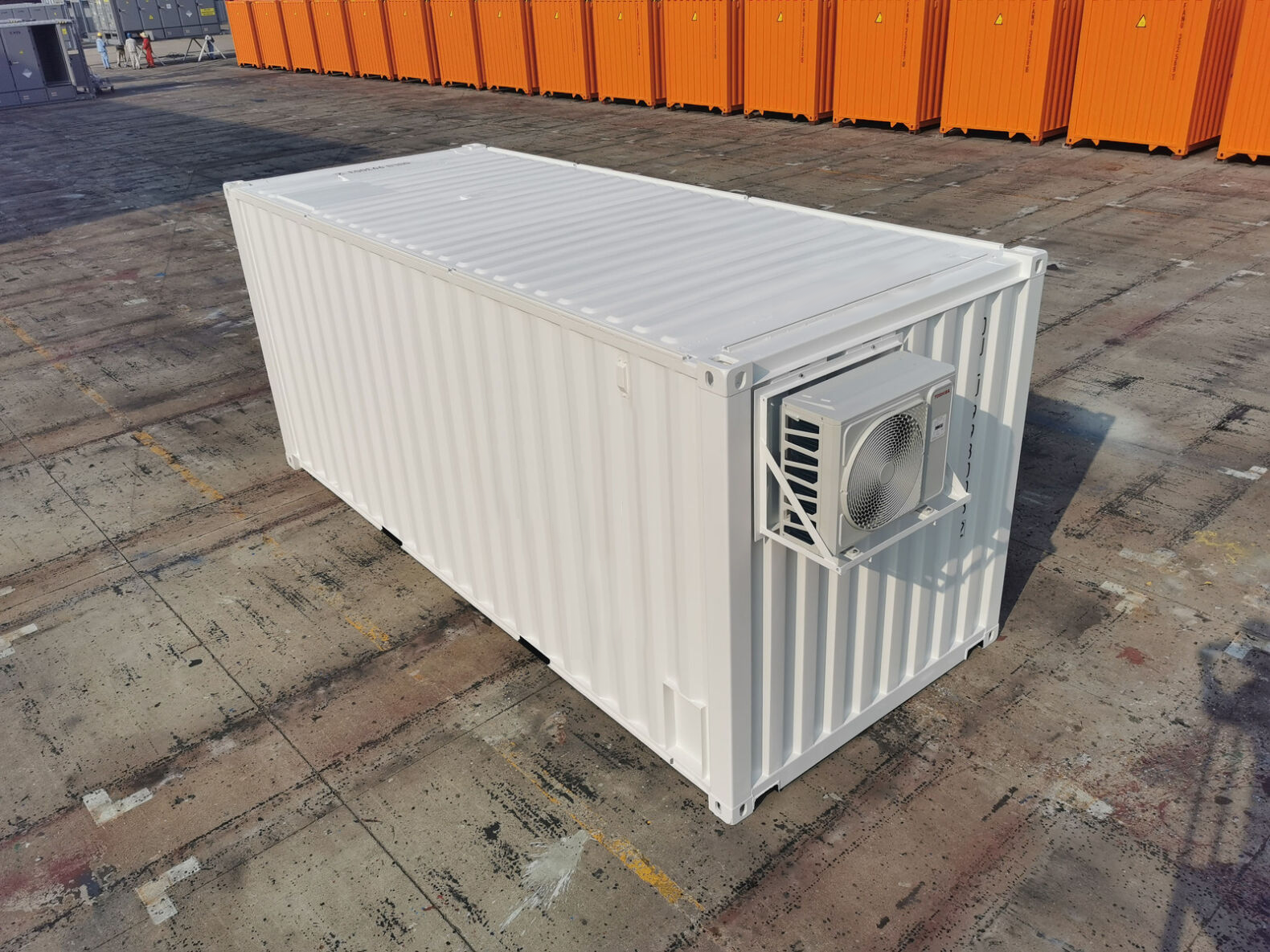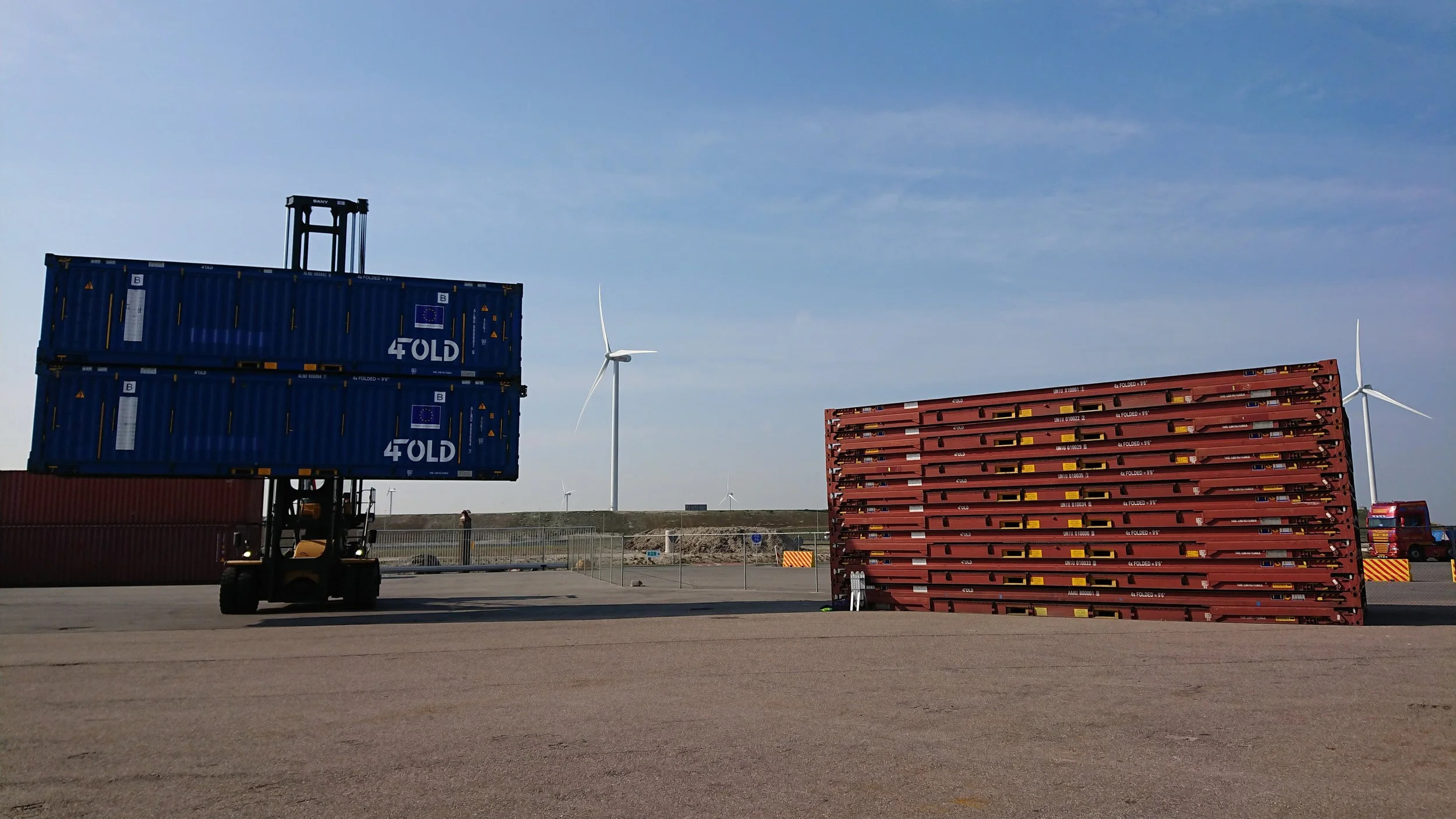
Explore our products designed for transport efficiency and sustainability. Our range includes patented foldable containers and specialized reefer containers, showcasing the synergy of technical development, production coordination, and certification.
Foldable Open Top Container
-
A 20ft open-top container with a patented folding technology designed for efficient handling of dry bulk.
-
External Dimensions (L x W x H):
6058 mm x 2438 mm x 2591 mm
Bundle (4:1) Height: 2591 mm
Cubic Capacity: 33.2 cu.m.
Rating: 30480 kgs
Tare Weight: 3950 kgs
Payload: 26530 kgs
Stacking Capacity per Corner: 97200 kgs
Racking Test Load: 150 kN
-
ISO: 668, 830, 1161, 1496-4, 1496-5, 6346; CSC
Equipment Containers
-
A 20ft container customized for client's machinery with AC cooling and entry door.
-
External Dimensions (L x W x H):
6058 mm x 2438 mm x 2591 mm
Cubic Capacity: 33.2 cu. m.
Rating: 25000 kgs
Tare Weight: 2450 kgs
Payload: 22550 kgs
Stacking Capacity per Corner: 97200 kgs
Racking Test Load: 150 kN
Floor Test Load: 7260 kgs
-
ISO: 668, 830, 1161, 1496-1, 6346; CSC; CCC
Offshore Frames
-
A 20ft offshore container made for transport and safety containment of machineries and equipment.
-
External Dimensions (L x W x H):
6058 mm x 2438 mm x 2591 mm
Rating: 18270 kgs
Tare Weight: 3270 kgs
Payload: 15000 kgs
Stacking Capacity per Corner: 36540 kgs
Racking Test Load: 88 kN
-
ISO: 668, 830, 1161, 6346; DNV 2.7-1; EN 12079; CSC
Checkpoint Container
-
A 20ft gate platform container for military use.
-
External Dimensions (L x W x H):
12192 mm x 2438 mm x 2896 mm
Cubic Capacity: 72.9 cu. m.
Rating: 32500 kgs
Tare Weight: 5900 kgs
Payload: 26600 kgs
Stacking Capacity per Corner: 97200 kgs
Racking Test Load: 150 kN
-
ISO: 668, 830, 1161, 1496-5, 6346; CSC; UIC
Dangerous Goods Container
-
A 20ft open side container, with improved ventilation and bund design, and made for transporting hazardous materials.
-
External Dimensions (L x W x H):
6058 mm x 2438 mm x 2591 mm
Cubic Capacity: 31 cu. m.
Rating: 30480 kgs
Tare Weight: 3540 kgs
Payload: 26940 kgs
Stacking Capacity per Corner: 97200 kgs
Racking Test Load: 150 kN
Floor Test Load: 2000 kgs
-
ISO: 668, 830, 1161, 1496-1, 6346; CSC
Foldable Cargo Container
-
A 20ft pallet-wide land container that folds to 20% of its original volume.
-
External Dimensions (L x W x H):
6058 mm x 2438 mm x 2591 mm
Bundle (4:1) Height: 2896 mm
Cubic Capacity: 33.2 cu. m.
Rating: 12490 kgs
Tare Weight: 2490 kgs
Payload: 10000 kgs
Stacking Capacity per Corner: 97200 kgs
Racking Test Load: 150 kN
Floor Test Load: 5460 kgs
-
ISO: 668, 830, 1161, 1496-1, 6346; CSC, UIC
4FOLD Container
-
A foldable 40ft high cube shipping container that folds to 25% of it's original volume.
-
External Dimensions (L x W x H):
12192 mm x 2438 mm x 2896 mm
Cubic Capacity: 72.9 cu. m.
Rating: 32500 kgs
Tare Weight: 5900 kgs
Payload: 26600 kgs
Stacking Capacity per Corner: 97200 kgs
Racking Test Load: 150 kN
-
ISO: 668, 830, 1161, 1496-1, 1496-5, 6346; CSC
Reefer
-
A 20ft refrigerated container with generator set and internal lighting.
-
External Dimensions (L x W x H):
6058 mm x 2438 mm x 2591 mm
Cubic Capacity: 28.6 cu. m.
Rating: 16000 kgs
Tare Weight: 2730 kgs
Payload: 13270 kgs
Stacking Capacity per Corner: 97200 kgs
Racking Test Load: 150 kN
Floor Test Load: 7260 kgs
-
ISO: 668, 830, 1161, 1496-2, 6346, 12944; CSC; UIC
Half Height Hard Top Container
-
A container with half the size of a standard 20ft container and a hardtop feature.
-
External Dimensions (L x W x H):
6058 mm x 2438 mm x 1295 mm
Bundle (2:1) Height: 2591 mm
Cubic Capacity: 14.2 cu. m.
Rating: 32500 kgs
Tare Weight: 2800 kgs
Payload: 29700 kgs
Stacking Capacity per Corner: 97200 kgs
Racking Test Load: 150 kN
Floor Test Load: 7260 kgs
-
ISO: 668, 830, 1161, 1496-1, 6346; CSC









